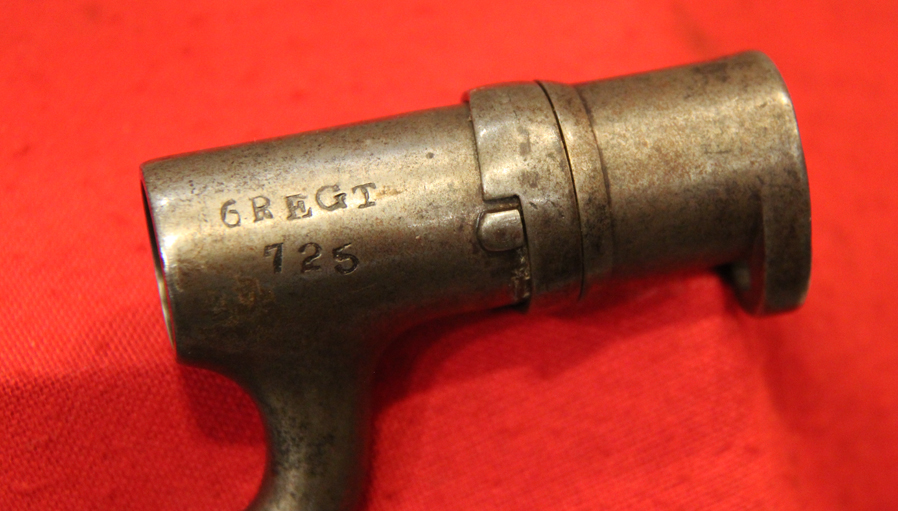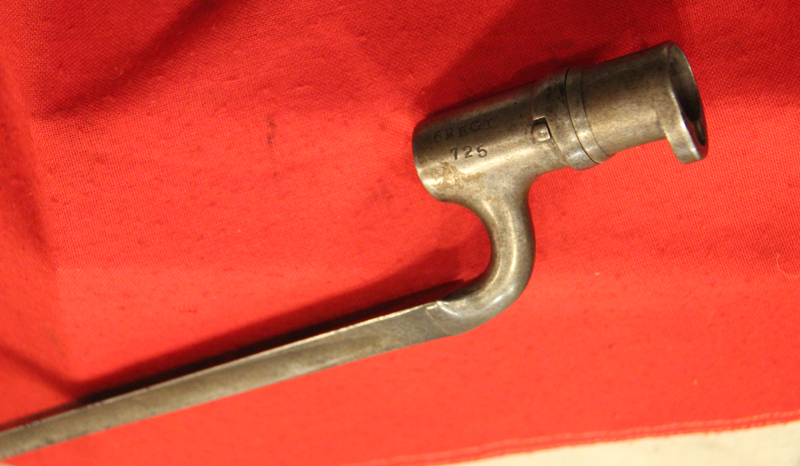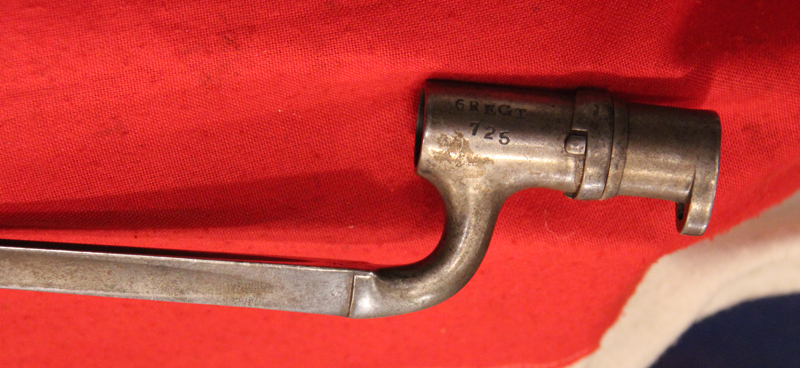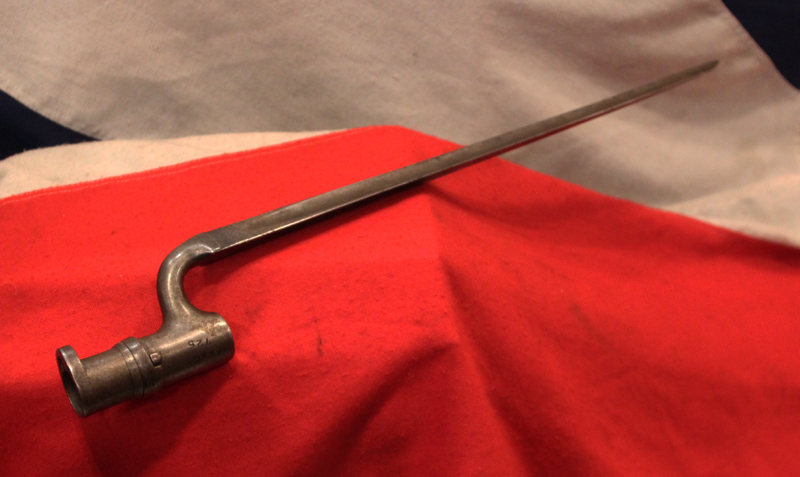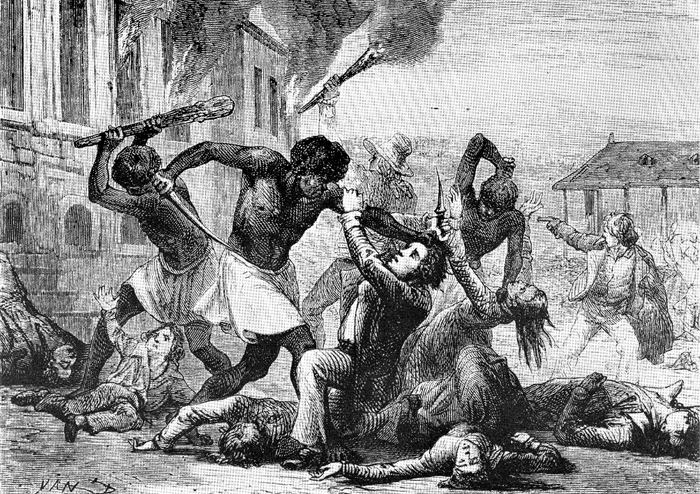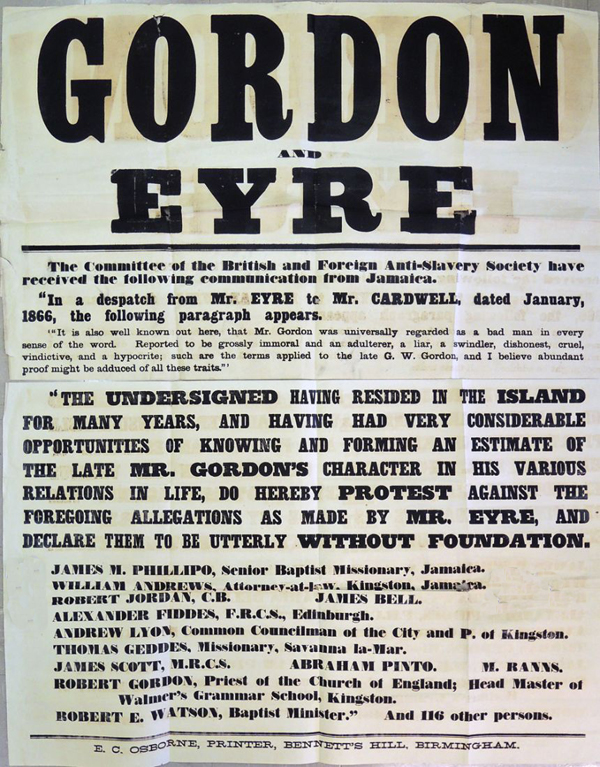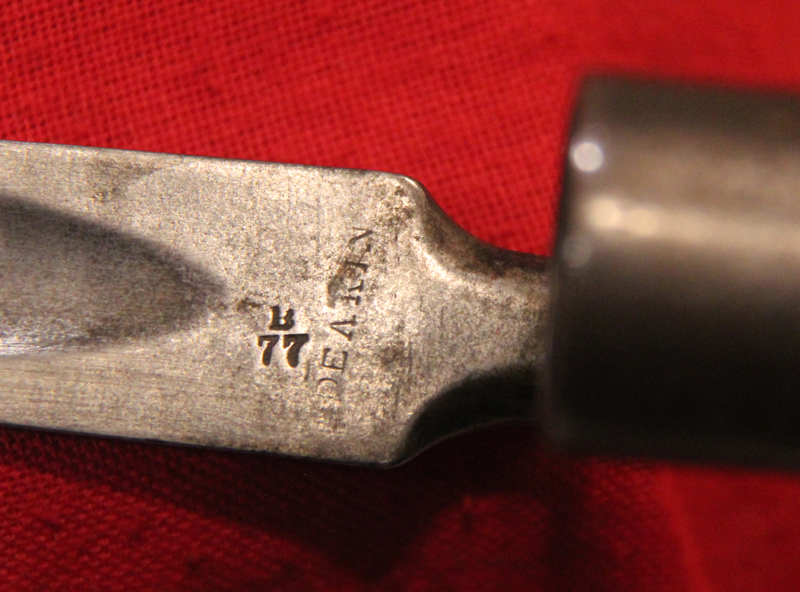A Rare 1853 Royal Warwickshire Regt. Historically Significant ‘Jamaican Rebellion’ Enfield Bayonet The Morant Bay Rebellion, From a Defender of Paul Bogle.
Regimentally marked bayonet for the 6th Regiment, the Royal Warwickshire. Maker marked by Deakin and full ordnance inspection stamps. A souvenir from a descendant of a defender of Paul Bogle’s, used with its service issue 1853 Enfield pattern rifle, in the Jamaican Rebellion in Morant Bay of 1864/5. The 1865 Jamaican uprising was put down by 6th Regt, The Royal Warwickshire soldiers. A leader of the Warwickshire Regiment, Colonel J. Francis Hobbs, led the British reprisals against Bogle’s community. Hobbs report to Governor Eyre (19 October) resulted in a commendation for bravery: "I found it most dangerous work crossing over the numerous rivers, which took the men above their waists. There was not a single non-commissioned officer or soldier who was not literally wet through, and every article of their clothing, saddlery, etc., utterly destroyed.
"Added to this, the entire darkness of the night made it a march never to be forgotten in the 6th Regiment. About daylight this morning, in passing through this village of cross roads, where the rebels destroyed everything, I found a number of special constables, who had captured a number of prisoners from the rebel camp. Finding their guilt clear, and being unable to take or leave them, I had them all shot. The constables then hung them up on trees, eleven in number. Their countenances were all very diabolical, and they never flinched the very slightest.
"From this we at once went to Stony Gut After partaking of some biscuits and rum in Bogle’s chapel, sending off his lamps as a trophy to his excellency the governor, and utterly destroying this rebellious settlement, I have returned with my jaded and sore-foot troops to this spot, where we bivouacked for the night in another ecclesiastical building, called the Chigoe-Foot Methodist Chapel.
"I must not forget to tell you that I have got Paul Bogle’s valet for my guide, a little fellow of extraordinary intelligence. A light rope tied to the stirrup, and a revolver now and then to his head cause us to understand each other; and he knows every single rebel in the island by name and face, and has been selecting the captains, colonels and secretaries out of an immense gang of prisoners just come in here, whom I shall have to shoot to-morrow morning."
Hobbs account of this bloody expedition was used as evidence in the Royal Commission of Inquiry which was set up to investigate Eyre’s role. Although it is doubtful whether Hobbs would have received the missive in time, he was certainly acting in the spirit of his commander’s instructions; the Deputy Adjutant-General John Henry Elkington (from a family of military officers with branches in Warwickshire and Leicestershire), had written to him on 18th October: "Colonel, I send you an order to push on at once to Stony Gut but I trust you are there already. Hole is doing splendid service with his men all about Machioneal" Paul Bogle (1822 to 24 October 1865) was a Jamaican Baptist deacon and activist. He is a National Hero of Jamaica. He was a leader of the 1865 Morant Bay protesters, who marched for justice and fair treatment for all the people in Jamaica. After leading the Morant Bay rebellion, Bogle was captured by government troops, tried and convicted by British authorities under martial law, and hanged on 24 October 1865 in the morant bay court house. The "Eyre Controversy" turned into a long and increasingly public issue, dividing well-known figures of the day. It may have contributed to the fall of the government. In 1866 John Stuart Mill set up and chaired the Jamaica Committee to examine the atrocities committed in Jamaica in the course of ending the rebellion. Thomas Carlyle set up a rival committee to defend Eyre. His supporters included John Ruskin, Charles Kingsley, Charles Dickens and Alfred, Lord Tennyson.
Code: 21392
425.00 GBP


